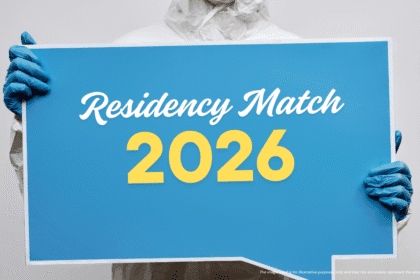IMGs can practice medicine in the USA without completing a U.S. residency. Explore your options today!
The path to practicing medicine in the United States can be daunting for International Medical Graduates. Between passing licensing exams and contending with an often lengthy residency process, many qualified doctors are unable to contribute their skills to the U.S. healthcare system. Yet, with a growing physician shortage, some states are creating alternative pathways that allow International medical graduates to practice without undergoing a full U.S. residency again.
Understanding the IMG Landscape in the US
An International Medical Graduate is defined as a physician who completed their medical education outside the United States or Canada. While International medical graduates bring a wealth of expertise and global perspectives, practicing in the U.S. traditionally requires:
- Passing the United States Medical Licensing Examination (USMLE) (Steps 1, 2, and sometimes 3).
- Completing a U.S.-based residency program.
For many International medical graduates, the bottleneck comes with residency. Competition is fierce, and the process often stretches over several years. While these rigorous standards aim to ensure high-quality healthcare, they can limit the ability of experienced international doctors to fill critical gaps in the U.S. system—particularly in underserved areas.
To counteract this, an increasing number of states are making it possible for highly skilled International medical graduates to practice medicine under certain conditions without repeating residency.
What Does It Mean to Practice Without US Residency?
US residency is a structured training program International medical graduates are typically required to complete to secure medical licensure in the United States. However, some states acknowledge that experienced IMGs—already licensed or trained in their home countries—bring valuable skills to address doctor shortages.
Licensing without US residency doesn’t mean bypassing all formalities. Instead, certain states provide alternative pathways to licensure. These may depend on factors such as your previous training, years of experience, or certification in a particular specialty.

States Allowing IMGs to Practice Without US Residency
Here are the states that offer alternative licensure pathways to IMGs in 2025:
1. Missouri
Missouri was the first state to recognize the potential of IMGs without requiring them to repeat residency. Through the “Assistant Physician” program, International medical graduates who have completed a foreign residency and passed USMLE Steps 1 and 2 can practice under the supervision of a licensed physician. This allows International medical graduates to gain clinical experience while serving communities in desperate need of more doctors. For more detailed information read the article: How IMGs Can Practice Medicine in Missouri Without US Residency
2. Arkansas
Arkansas has implemented the “Academic License Program” and “Graduate Registered Physician” program , which allows International medical graduates to practice in designated underserved areas under the supervision of a senior physician. This initiative addresses rural healthcare shortages while giving International medical graduates an opportunity to integrate into the U.S. system. For more details read the article: How IMGs Can Practice Medicine in Arkansas Without US Residency
3. Nevada
Nevada’s provisional license program enables International medical graduates to work in community health settings without repeating U.S. residency, provided they’ve completed foreign residency and passed the necessary exams. It’s a win-win solution for both healthcare providers and underserved patient populations. For more details read the article: How IMGs Can Practice Medicine in Nevada Without US Residency
4. Arizona
Arizona introduced provisional licensure pathways in 2023. IMGs with foreign residency experience can now provide care in rural and underserved areas under supervision. The program is part of Arizona’s state-wide push to expand healthcare access. For more details read the article: How IMGs Can Practice Medicine in Arizona Without US Residency
5. Florida
Florida passed legislation allowing International medical graduates to practice in underserved areas without completing U.S. residency. By conducting detailed vetting and licensing, Florida ensures that communities receive top-notch care from globally trained professionals. For more details read the article: How IMGs Can Practice Medicine in Florida Without US Residency
6. Wisconsin
Wisconsin’s policies provide licensure pathways for International medical graduates who fulfill residency requirements abroad. By directing these skilled physicians to rural regions, Wisconsin is supporting critical healthcare needs while addressing its physician shortage. For more details read the article: How IMGs Can Practice Medicine in Wisconsin Without US Residency
7. Illinois
Starting in 2024, Illinois introduced a program allowing International medical graduates to practice with USMLE certification and foreign residency credentials under two years of supervised practice. This program specifically targets underserved communities. For more details read the article: How IMGs Can Practice Medicine in Illinois Without US Residency
8. Iowa
Iowa recently enacted the “Provisional Physician License” law, effective in 2025. International medical graduates must practice in designated shortage areas under senior supervision for one year, with a pathway to full licensure afterward. For more details read the article: How IMGs Can Practice Medicine in Iowa Without US Residency
9. Idaho
Idaho created the “Conditional Physician Program” in 2024, allowing International medical graduates to work in rural clinics. They must pass USMLE Steps 1 and 2 and complete an 18-month supervised practice period before being eligible for unrestricted practice. For more details read the article: How IMGs Can Practice Medicine in Idaho Without US Residency
10. Washington
Washington’s “Limited Licensure for Foreign-Trained Physicians” permits International medical graduates to practice under supervision at community health centers after passing competency assessments and USMLE Steps 1 and 2. For more details read the article: How IMGs Can Practice Medicine in Washington Without US Residency
11. Virginia
Virginia launched its “Restricted Medical License” program in 2025. It enables International medical graduates to work within underserved regions while supervised for the first two years, provided residency training was completed abroad. For more details read the article: How IMGs Can Practice Medicine in Virginia Without US Residency
12. Tennessee
Tennessee’s “Alternative Licensure for International Physicians” program offers supervised pathways to full licensure for qualified International medical graduates. The program includes skills assessments and requires at least one year of supervised practice. For more details read the article: How IMGs Can Practice Medicine in Tennessee Without US Residency
Benefits of Allowing IMGs to Practice Without US Residency
Addressing the Physician Shortage
The United States faces a significant physician shortage, especially in rural and underserved areas. According to the Association of American Medical Colleges, the U.S. could see a shortage of up to 124,000 physicians by 2034. By integrating experienced International medical graduates into the system, these states are helping to bridge the gap and ensure better healthcare access.
Leveraging Global Expertise
IMGs bring a diverse set of skills and training methodologies cultivated in international health systems. Their unique expertise often results in innovative approaches to patient care and management.
Boosting Local Economies
Allowing IMGs to work legally contributes to economic stability. Not only do they provide essential healthcare services, but they also pay taxes and support local businesses—creating a ripple effect in underserved communities.
Challenges IMGs May Face
While these pathways offer promise, IMGs should be aware of potential hurdles:
- Licensing Exams: Passing USMLE Steps 1 and 2 remains a requirement in most states.
- Supervised Practice: Many states mandate supervised work for a few years before granting independent practice rights.
- Geographic Restrictions: Licenses may limit IMG practice to specific rural or underserved areas.
Navigating these challenges requires careful planning and persistence, but the rewards are well worth the effort.
How to Start the Process
Here’s a general step-by-step guide for IMGs interested in pursuing these pathways:
- Pass USMLE Steps 1 and 2: Prepare thoroughly and achieve required scores to meet state licensure requirements.
- Verify Foreign Residency Credentials: Gather documentation proving the successful completion of your residency abroad.
- Submit Licensure Applications: Each state has its own application process—check guidelines and deadlines carefully.
- Engage in Supervised Practice: Meet state requirements for supervised training in rural or underserved areas.
- Fulfill Additional State-Specific Requirements: This may include continuing medical education (CME) credits or clinical assessments.
Looking Ahead
With physician shortages on the rise, the U.S. needs talented IMGs more than ever. Existing pathways are already creating meaningful change, and more states may follow suit as new policies emerge. Staying up to date on legislative developments is critical for IMGs looking to establish their medical careers stateside.
FAQs
What exams do IMGs need to pass to practice in these states?
Most states require IMGs to pass USMLE steps 1 and 2. Some states may have additional assessments or certification requirements.
Are there limitations to where IMGs can practice without residency?
Yes, most programs limit IMG practice to underserved or rural areas where physician shortages are critical.
Connect with Fellow IMGs
Are you an IMG exploring these opportunities? Share your experiences or ask your questions in the comments below.
For more such news please bookmark our page: USMLE News














